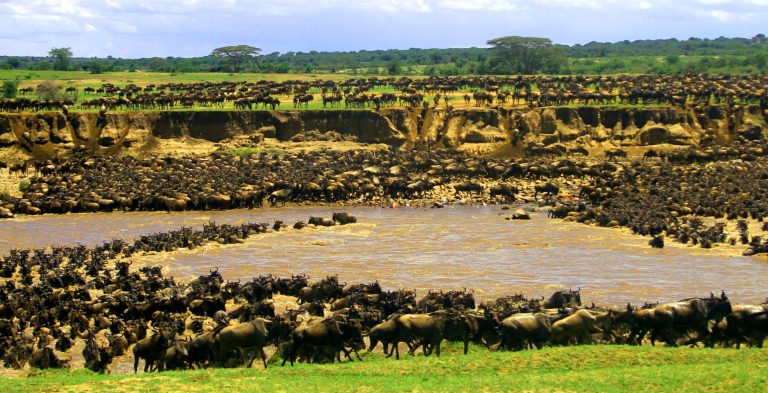“Witnessing the Serengeti Migration River Crossing”
The annual wildebeest migration in the Serengeti is an awe-inspiring natural phenomenon. The migration is the largest terrestrial mammal migration in the world, involving over 1.5 million wildebeest, zebra, and gazelle. The migration is a complex journey that involves crossing rivers, navigating grasslands, and avoiding predators. One of the most challenging parts of the migration is the river crossing, which involves the animals taking a leap of faith into crocodile-infested waters.
Serengeti Migration Overview
The Serengeti migration is an annual event that begins in the southern Serengeti in Tanzania and ends in the northern Serengeti in Kenya. The migration follows an ancient path that has been used for thousands of years by the wildebeest, zebra, and gazelle in search of food and water. During the migration, the animals travel up to 2,800 kilometers, crossing rivers, grasslands, and mountains. The migration is a dangerous journey, as the animals must avoid predators such as lions and hyenas, and also must cross rivers infested with crocodiles.
The River Crossing
The river crossing is one of the most difficult parts of the migration. The animals must cross the Mara, Grumeti, and Talek Rivers, all of which are infested with Nile crocodiles. The wildebeest and zebra are the first to jump in, followed by the gazelle. The animals must take a leap of faith into the water, trusting that they will make it to the other side. The river crossing can be a dangerous endeavor, as the crocodiles often attack the animals as they swim across.
Challenges of the Crossing
The river crossing is a challenge for the animals, as they must brave the fast-moving water and avoid the crocodiles. The animals also must be careful not to get swept away by the current. Additionally, the animals must cross the rivers at the right time, as the timing of the migration is critical. If the animals cross the river too early or too late, they can miss out on the best grazing grounds.
The Impact of Human Activity
Human activity has had a major impact on the Serengeti migration. Over the years, the migration has been disrupted by the construction of roads and fences, as well as the introduction of hunting and poaching. These activities have fragmented the migration route, making it more difficult for the animals to navigate. Additionally, the increasing human population has resulted in the destruction of habitats, which has further disrupted the migration.
The annual wildebeest migration in the Serengeti is an incredible natural event. The migration involves over 1.5 million wildebeest, zebra, and gazelle, and is a dangerous journey that involves crossing rivers and navigating grasslands. The river crossing is one of the most difficult parts of the migration, as the animals must take a leap of faith into crocodile-infested waters. Unfortunately, human activity has had a major impact on the migration, disrupting the migration route and destroying habitats.

